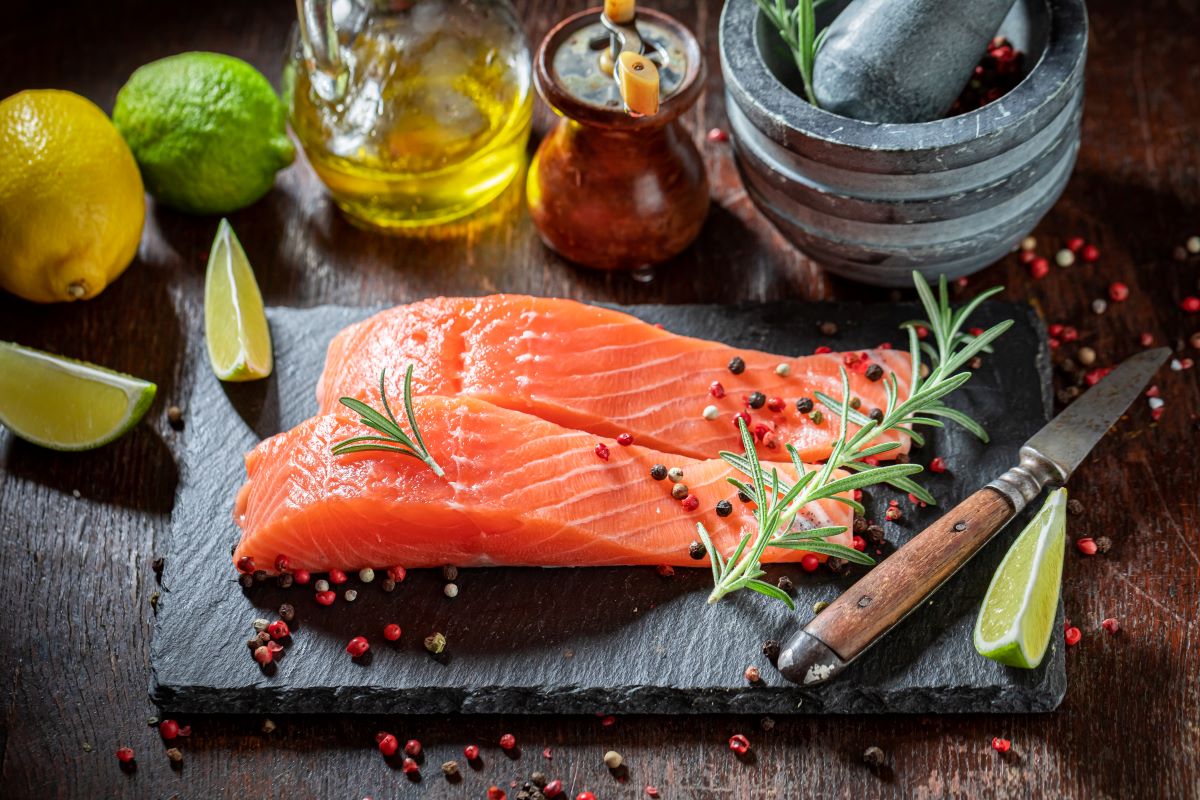
We all know that Copper River Coho, Sockeye, and King salmon are delicious. But how do they fit into a healthy diet? The great news is that you can have your salmon and eat it, too. Wild Copper River salmon is packed with nutrition.
Protein
All three varieties of Copper River salmon are rich in protein. A four ounce serving of King salmon has about 30 grams of protein. Sockeye has about 31 grams per serving. Coho has a whopping 36.5 grams of protein per four ounce serving.
In comparison, a four ounce filet mignon contains 30 grams of protein. Salmon is an excellent, non-red meat source of high-quality dietary protein.
Fat and Calories
A four ounce serving of King salmon has about 263 calories and 15 grams of fat. Sockeye comes in at 250 calories and 12.5 grams of fat, and Coho, the leanest of Copper River’s wild salmon, has just 160 calories and 4.5 grams of fat.
Let’s compare this again to our 4-ounce filet mignon, which contains 227 calories and 15 grams of fat.
Omega-3 Fatty Acids
Because Copper River salmon are wild, they need plenty of energy to brave the cold water and their journey to the river. They carry that energy as omega-3 fatty acids. These powerhouse polyunsaturated fats play a vital role in how our bodies function.
Omega-3 fatty acids are part of our cell structure and give us energy, but they also protect us from illness. Omega-3s help us:
- Keep our hearts healthy by lowering cholesterol and blood pressure, improving blood flow, and reducing the risk of blood clots, heart attack, and stroke
- Reduce inflammation
- Bolster brain health and mood
- Protect and maintain joint health
Scientists continue to study omega-3s, researching more possible health benefits from these nutritional heavyweights.
So how much omega-3 fatty acid is in salmon? 4 ounces of Copper River King has 1,942 milligrams, Sockeye has 1,371 mg, and Coho has 1,257 mg. Our filet mignon is not a source of these healthy fats.
Other Nutrients and Their Benefits
Wild Copper River salmon isn’t just a great source of protein and omega-3s. King, Sockeye, and Coho salmon are also excellent sources of Vitamin D, potassium, antioxidants, and calcium.
Combined with the mighty benefits of omega-3s, these nutrients further support healthy hearts, reduced inflammation and fluid retention, promote strong bones, and reduce the risk of some cancers.
Wonder how this stacks up against our filet mignon? Beef is not a good source of the vitamins and minerals found in wild salmon. It does, however, provide more iron, zinc, and vitamins B-6 and B-12.
Wild Copper River Salmon vs. Farmed Salmon Health Benefits
Farmed salmon does not have the same health benefits as wild Copper River salmon. Farmed fish have a very different diet than their wild cousins. This and the conditions on fish farms change the nutritional profile of the fish.
Farmed salmon has more fat, less calcium, less iron, and lower levels of some omega-3s. It is also more likely to contain contaminants including PCBs (up to 16 times higher) and dioxin.
Like other livestock, antibiotics are sometimes introduced to fight infection and disease in crowded fish farms.
Bottom Line
Wild Copper River salmon is packed with nutrition that benefits your heart, brain, joints, and more. It’s an excellent, delicious addition to a healthy diet. Caught in the first salmon run of each season, Copper River salmon is available year round thanks to flash freezing.
Order Copper River Salmon HERE
Resources: Healthline, WebMD